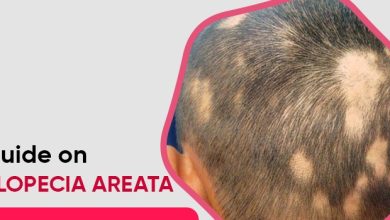What is IVF Treatment and how does it work?

In-vitro fertilization (IVF Treatment) is the process of fertilizing an egg outside of the body and then implanting it in the uterus. The procedure may be necessary if a woman has blocked fallopian tubes, low ovarian reserve, poor egg quality, or endometriosis. There are multiple steps involved in IVF treatment, and they vary slightly depending on whether you’re using fresh or frozen embryos or eggs, as well as on your age and how many embryos you want to transfer to your uterus during the procedure. Although there are many benefits to IVF treatment And there are Myths About IVF Treatment.
Step 1: Stimulate Ovarian Egg Production
The first step of the IVF process is to stimulate the ovaries to produce multiple eggs. This is done through a combination of medication and ultrasound monitoring. The goal is to produce as many eggs as possible while minimizing the risk of complications. One week before egg retrieval, progesterone supplements are administered to help mature the uterine lining. After egg retrieval, fertilization takes place in a lab and embryos are transferred back into the uterus three days later, once they have reached an appropriate size. If pregnancy doesn’t occur after the first transfer, frozen embryo transfers can be performed up to six months later. If pregnancy occurs following one or more frozen embryo transfers, more than one baby may be born.
Step 2: Harvest Eggs
The next step is to harvest eggs from the ovaries. This is done through a minor surgical procedure called follicle aspiration. A needle is inserted into the ovary and the fluid inside the follicle is suctioned out. This process is usually done while the patient is under anesthesia. Egg retrieval can be done multiple times during an IVF cycle, and each time around. More eggs are harvested until the doctor feels they have enough to achieve fertilization.
This may sound like a lot of egg harvesting, but there are enough good quality eggs left in the body after this procedure that it will not significantly reduce your chances of conceiving naturally in the future if you don’t go on to fertilize these eggs with sperm.
Step 3: Inseminate with Sperm
The next step is to inseminate the eggs with sperm. This can be done in one of two ways: intracytoplasmic sperm injection (ICSI) or standard insemination. ICSI involves injecting a single sperm into each egg, while standard insemination entails placing millions of sperm around each egg in a petri dish. If you opt for ICSI, the embryologist will select the best looking sperm under a microscope and inject it into the eggs using a very fine needle. They may also use computer software to improve the process by selecting which sperm to use. With traditional insemination, after the sperm has been counted, they are placed on top of the eggs and left to swim around until they fertilize an egg.
Step 4: Embryo Transfer
The final step of the IVF process is the embryo transfer. This is when the embryos are placed into the uterus through a catheter. The number of embryos that are transferred depends on the patient’s age, health, and other factors. The embryo transfer is usually done three to five days after egg retrieval. If there are more than one viable embryos, only one will be transferred during this procedure. Patients will be given medication to help increase their uterine lining in preparation for implantation.
The embryo should survive and grow within the uterus for six weeks before an ultrasound can confirm pregnancy.
Step 5: Pregnancy Test
After the egg retrieval procedure, your eggs will be fertilized with your partner’s sperm. This process happens in a lab. Once the embryos are created, they’ll be placed in your uterus. A pregnancy test will be done two weeks later to see if the procedure was successful. There are three different types of procedures for IVF: traditional IVF, frozen embryo transfer (FER), and intrauterine insemination (IUI). FER is when you create an embryo through the process of IVF and freeze it before transferring it into your uterus up to 10 years later. IUI involves giving you hormones to help your ovaries produce more eggs than usual so that more than one can be fertilized at once.
Step 6 (Optional): Freezing Embryos for Future Use
If you have extra embryos after your fresh cycle, you may elect to have them frozen for future use. This process, called cryopreservation, involves slowly cooling the embryos to a temperature where they can be safely stored in liquid nitrogen. When you’re ready to use them, the embryos are thawed and transferred to your uterus by a best infertility doctor in Dhaka.




